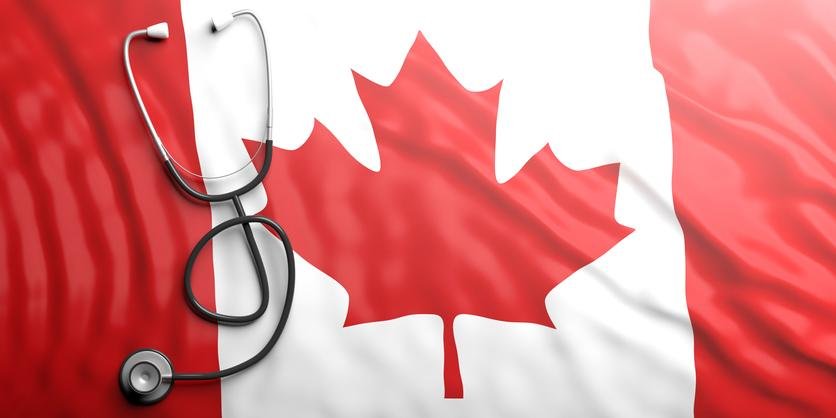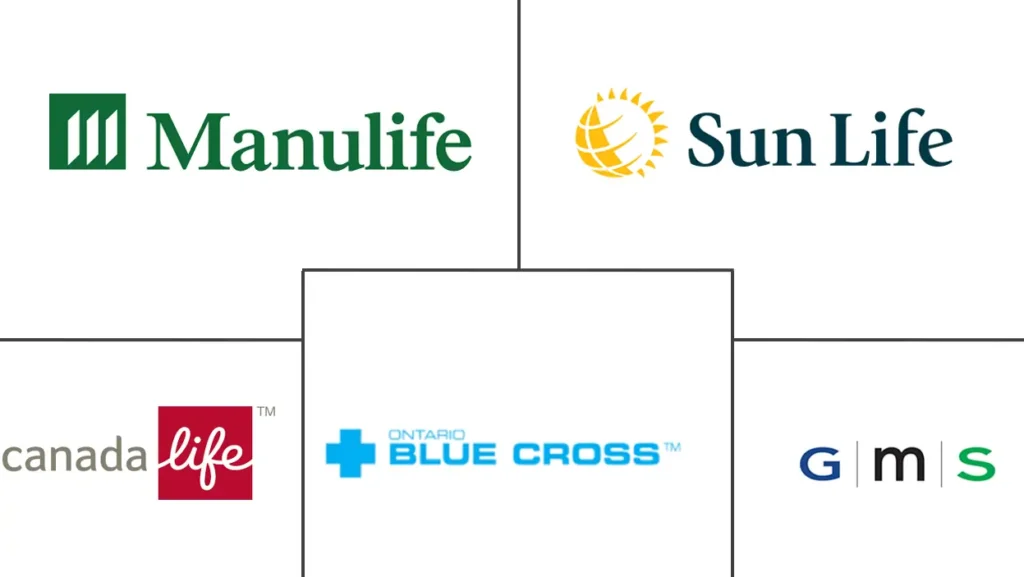
Health insurance in Canada is a critical component of the nation’s healthcare system, ensuring that residents have access to essential medical services. The system is a mix of public and private health insurance, each serving distinct roles. This blog post explores how health insurance works in Canada and highlights the key differences between public and private options.
Health Insurance in Canada: An Overview
Canada’s healthcare system is often referred to as a “single-payer” system, primarily funded through taxes and administered by provincial and territorial governments. The cornerstone of this system is the Canada Health Act (1984), which sets standards for universal, accessible, and publicly administered healthcare. Under this framework, all Canadian citizens and permanent residents are entitled to medically necessary hospital and physician services without out-of-pocket costs at the point of care. However, the public system does not cover all healthcare services, such as prescription drugs, dental care, vision care, or certain specialized treatments. This is where private health insurance comes into play, offering supplementary coverage for services not included in the public plan.
What is health insurance?
Health insurance is a type of insurance that covers the cost of medical care for an individual. It typically covers a wide range of medical services, including hospital stays, doctor’s visits, surgical procedures, and medical tests.
The goal of health insurance is to provide people with access to medical care and to protect them from financial ruin due to high medical costs. Health insurance is typically purchased from an insurance company, and the cost of the insurance is determined by a variety of factors, including the individual’s age, health history, and location.
What does health insurance cover in Canada?
In Canada, public health insurance covers a wide range of medical services, including hospital stays, doctor’s visits, and medical tests. It also covers some prescription drugs and some medical devices, such as hearing aids and prosthetic devices. However, public health insurance does not cover all medical expenses, and individuals may need to pay out of pocket for some services, such as dental care and vision care.
Private health insurance may provide additional coverage for services that are not covered by public health insurance. It is important for individuals to review their health insurance policies carefully to understand what services are covered and what costs they may be responsible for.

Public Health Insurance in Canada
What is it?
Public health insurance, often referred to as Medicare in Canada, is government-funded and managed by each province or territory. Each region operates its own health insurance plan (e.g., OHIP in Ontario, MSP in British Columbia) under the guidelines of the Canada Health Act.What does it cover?
- Hospital services: Inpatient and outpatient care, surgeries, and emergency services.
- Physician services: Consultations with general practitioners and specialists.
- Diagnostic tests: X-rays, MRIs, and lab tests deemed medically necessary.
- Some preventive care: Such as vaccinations and screenings.
Key Features:
- Universal access: Available to all residents, regardless of income or health status.
- No direct costs: Services are free at the point of delivery, funded through taxes.
- Portability: Coverage can be used across provinces, though some restrictions may apply.
- Wait times: Due to high demand, wait times for non-emergency procedures can be lengthy (e.g., months for elective surgeries or specialist appointments).
Limitations:
Public plans do not cover:
- Prescription medications (outside hospitals).
- Dental care, except in specific cases (e.g., hospital-based procedures).
- Vision care (e.g., glasses, contact lenses).
- Allied health services (e.g., physiotherapy, chiropractic care).
- Non-medically necessary procedures (e.g., cosmetic surgery).
To address these gaps, many Canadians rely on private health insurance.
Private Health Insurance in Canada
What is it?
Private health insurance is offered by insurance companies or employers to cover services not included in public plans. It is optional and typically purchased individually or provided as part of an employee benefits package.What does it cover?
Private plans vary widely but often include:
- Prescription drugs: Coverage for medications used outside hospitals.
- Dental care: Routine checkups, cleanings, fillings, and orthodontics.
- Vision care: Eye exams, glasses, and contact lenses.
- Paramedical services: Physiotherapy, massage therapy, acupuncture, etc.
- Private hospital rooms: Enhanced accommodations during hospital stays.
- Travel insurance: Medical coverage for emergencies abroad.
Key Features:
- Customizable plans: Individuals can choose coverage based on their needs and budget.
- Faster access: Private insurance can reduce wait times for non-emergency services (e.g., diagnostic imaging or specialist consultations).
- Out-of-pocket costs: Premiums, deductibles, or co-pays may apply, depending on the plan.
- Employer-sponsored plans: Many Canadians access private insurance through workplace benefits, which may cover dependents as well.
Limitations:
- Cost: Premiums can be expensive, especially for comprehensive plans or individual policies.
- Not a replacement: Private insurance cannot duplicate services covered by public plans (e.g., you cannot use private insurance to “skip the line” for publicly funded surgeries).
- Eligibility: Some plans may exclude pre-existing conditions or require medical underwriting

How much does health insurance cost in Canada?
The cost of private health insurance in Canada varies widely depending on factors such as age, health status, coverage level, family size, location, and the insurance provider. Since public health insurance (Medicare) is funded through taxes and free at the point of service for medically necessary hospital and physician services, this answer focuses on private health insurance, which covers supplementary services like prescription drugs, dental care, and vision care. Below is a detailed overview based on available information.
Average Costs of Private Health Insurance
Private health insurance premiums are typically paid monthly and can range from affordable basic plans to comprehensive plans with higher costs. Here are some general estimates:Individuals:
Basic plans: $50–$200 per month. These cover essentials like limited prescription drugs, basic dental, or vision care. For example, a 35-year-old single male might pay around $61.32/month for a basic plan (e.g., Sun Life).
Comprehensive plans: $200–$350+ per month. These include broader coverage for dental, vision, prescription drugs, and paramedical services. For a 75-year-old, premiums can reach $348.40/month (e.g., Manulife).
With pre-existing conditions: Premiums are higher, ranging from $99.10/month for a 25-year-old to $304.34/month for a 75-year-old.
Couples:
Premiums start at around $110.38/month for a 28-year-old couple with no pre-existing conditions.
Comprehensive plans can cost $207–$270/month (e.g., Health Plus PRIORITY or OPTIMUM plans).
Families:
A family of four (e.g., a 45-year-old male, 35-year-old female, and two children) might pay $175.89/month for a basic plan, with comprehensive plans ranging from $167.24 to $818.30/month.
Average annual costs for families can be around $4,000 CAD, though this varies by coverage and province.
National Average:According to the Canadian Institute for Health Information (CIHI), private health insurance costs about $756 annually ($63/month) per person, though this pre-COVID figure may be higher now.
Households spend roughly $2,000/year on uncovered services and $4,000/year on private insurance premiums.
Key Differences Between Public and Private Health Insurance
| Aspect | Public Health Insurance | Private Health Insurance |
|---|---|---|
| Funding | Tax-funded, administered by provinces/territories. | Paid through premiums (individual or employer plans). |
| Coverage | Medically necessary hospital and physician services. | Prescription drugs, dental, vision, and paramedical. |
| Cost to User | Free at point of service. | Premiums, deductibles, or co-pays may apply. |
| Access | Universal for all residents. | Optional, based on ability to pay or employer benefits. |
| Wait Times | Can be long for non-emergency services. | Often faster for covered services. |
| Regulation | Governed by Canada Health Act. | Regulated by insurance industry standards. |
| Purpose | Core healthcare services for all. | Supplementary coverage for non-covered services. |
Public and Private: A Complementary System
In Canada, public and private health insurance work together to provide comprehensive care. The public system ensures that no one is denied essential medical services due to financial barriers, while private insurance offers flexibility and access to additional services. For example, a Canadian might rely on public insurance for a hospital stay but use private coverage for prescription medications or dental work. However, the system is not without challenges. Long wait times in the public system and the rising cost of private premiums can create disparities in access. Some Canadians, particularly those without employer-sponsored plans, may struggle to afford private coverage for uncovered services like medications or dental care. Provincial governments are working to address these gaps—some, like British Columbia and Prince Edward Island, have introduced limited public pharmacare programs—but a national pharmacare plan remains under discussion as of 2025.

Tips for Navigating Health Insurance in Canada
- Understand your provincial plan: Check your province’s health plan website (e.g., OHIP, MSP) to know what’s covered and how to apply for a health card.
- Evaluate private insurance needs: If you have specific needs (e.g., regular prescriptions, dental care), compare private plans or explore employer benefits.
- Plan for travel: Public plans offer limited coverage outside Canada, so consider travel insurance for international trips.
- Stay informed: Follow updates on healthcare reforms, such as potential pharmacare expansions, which could impact coverage.
- Budget wisely: If purchasing private insurance, balance premiums with coverage to avoid overpaying for unnecessary services.
Conclusion
Canada’s health insurance system is a blend of universal public coverage and optional private plans, each with its strengths and limitations. Public health insurance ensures equitable access to essential care, while private insurance fills gaps for non-covered services and offers faster access to certain treatments. By understanding the differences and leveraging both systems, Canadians can make informed decisions to meet their healthcare needs. If you’re navigating health insurance options, take time to assess your needs, explore employer benefits, and stay updated on provincial and federal healthcare policies. A well-informed approach can help you maximize the benefits of Canada’s unique healthcare system.
